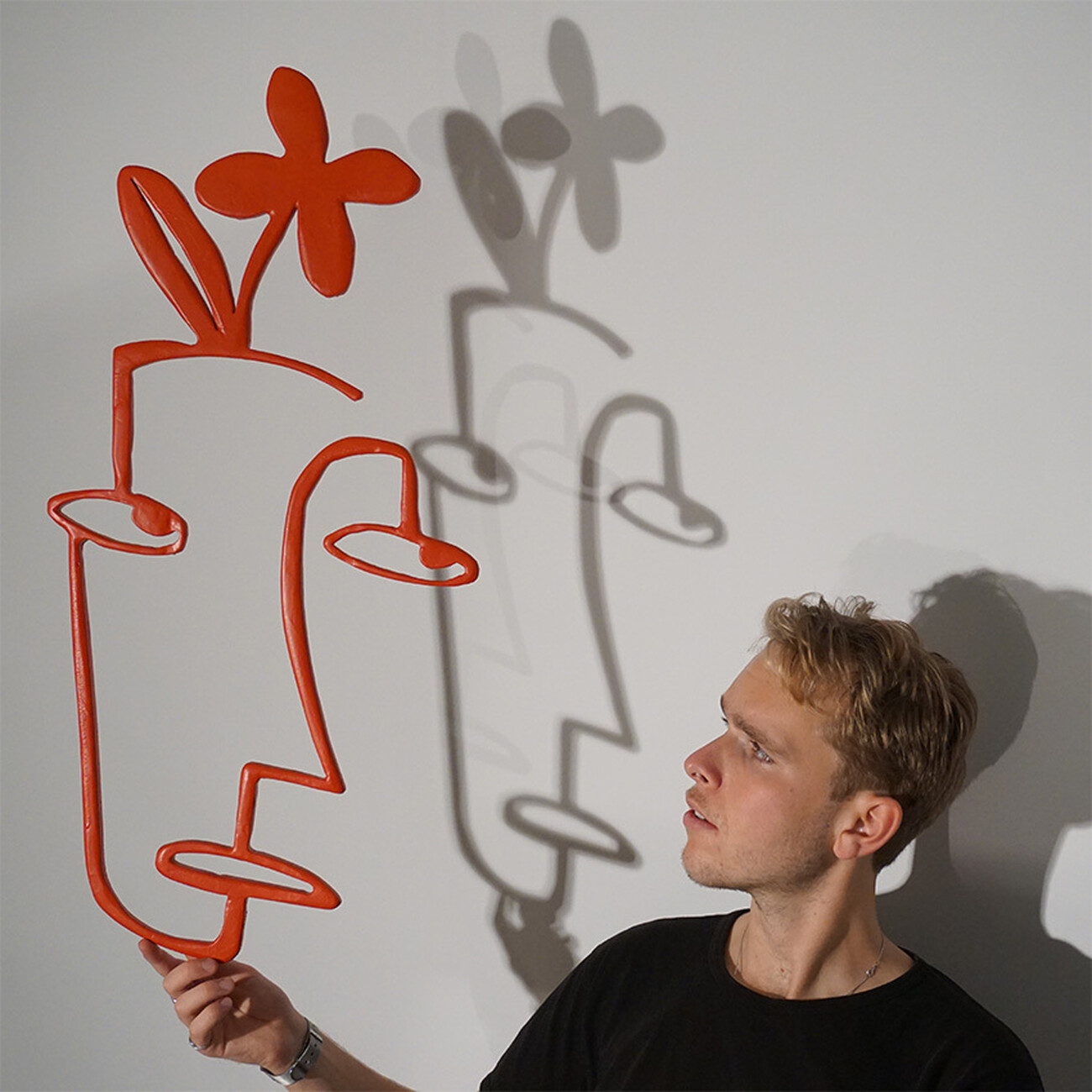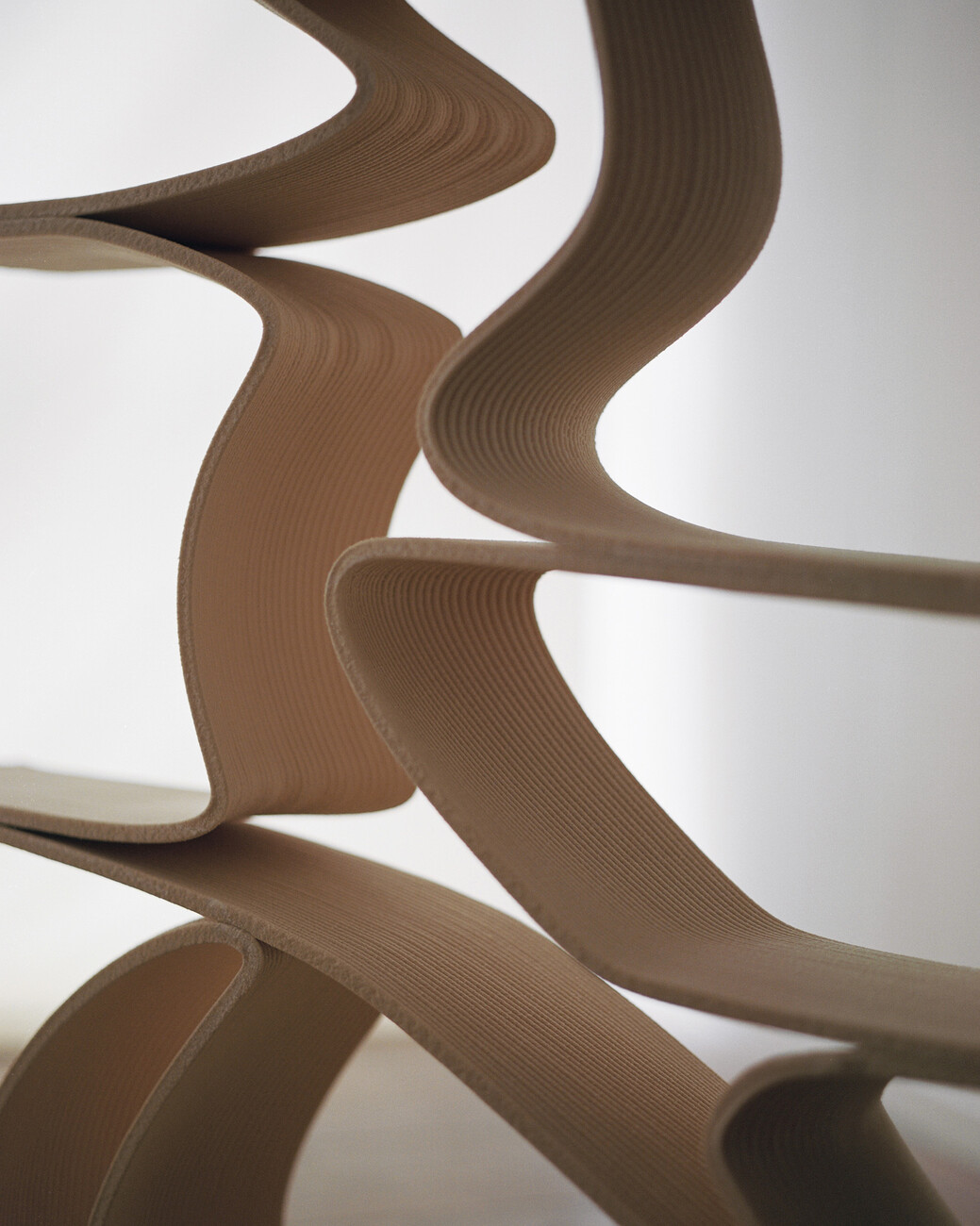YOUNG TALENTS
Connecting the dots
To pigeonhole Simon Mattisson as a furniture designer would not do him justice. In his work, he is connecting interdisciplinary methods such as the digital and the physical, the natural and the artificial, technology and history. His latest work, Granland, is a circular furniture production, a new material, an exploration of form in a new production method and using design as a communication means for an environmental problem: The spruce bark beetle and the vast damage it does to Swedish forests.
Anika Paulus: We met earlier this year at Stockholm Design Week, where you were exhibiting Grandland. The last year showed an impressive roster of exhibitions, awards and scholarships. How does that feel?
Simon Mattisson: Exhibitions are great – especially when there's an angle to it or I have the opportunity to engage with new contexts and questions. It is nice to be acknowledged with awards, but it doesn't really affect me in my headspace or my day-to-day work. After an award ceremony I’m still laying in bed thinking about the next piece of furniture to be put into the world. I am a creator, and the creation itself is important for me.
What comes first in your creative process – the vision, the art form or the material?
Simon Mattisson: That is hard to say, as it really depends. The process usually begins with a question, a problem, a function or a production method. I always try to design the object that is to be created in harmony with the production method and the producers. No matter what technique or material I am using, it is mostly a team effort. In the next step, I try to create my own framework and circle in on the essential. This might be a design method, physical dimensions, the answer to a question, the fulfilment of a function or even an atmosphere. I usually have a very clear idea of what I want to do by then. I work very fast and the ideas aren't slowly and meticulously chiselled out; they rather blink into existence more or less finished. This can be triggered by something small and insignificant as a specific shape, a cloud, or notes of music that are then transformed into clearly defined concepts and physical objects.
Let’s talk about the objects. Your works seem to change in-between materials and art forms. Is the absence of a clear, tangible definition typical for your work?
Simon Mattisson: Absolutely. I see myself as an interdisciplinary designer. While I might now be branded as the "3D-print guy" in Sweden, it is not the only thing I do or want to do. For me, materials are a means to an end. There are so many exciting things, shapes and materials to explore, so I don’t want to limit myself to just one method or material. Half of my work is concerning form and function, half is connecting dots; looking for overlaps, combinations and creating new ways and systems. The digital/physical crossover is crucial to the way I work. I design in harmony with how an object is supposed to be manufactured and consciously let the digital tools I use alter and affect the form – with all their frameworks, limitations and quirks. One example is my project Granland, where I started with developing my own method for designing for large scale additive manufacturing. I let the method and tools guide and affect both form and function. Almost all my work in recent years has been created this way. It is an integral part of the way I work and something I take great joy in.
What is so fascinating about such a technical, almost scientific approach?
Simon Mattisson: I'm really interested in new and modern tools, materials and techniques – both physical and digital – to explore how they might affect the process and the finished object. What I find so exciting about my 3D-printed furniture is that both the shape and the look and feel of the material is free from associations. It draws you in, you want to understand and interact with it. The material looks neither like wood nor like plastic, but something in between. I love exploring new and unseen things, and creation that leads to discussion and dialogue. It is my driving force. I find the furniture world right now quite stagnant and boring. We are pumping out furniture and interiors looking and being produced more or less the same as 100 years ago. I think we can do more, and better.
You said that in your work you want to create systems to understand how the world is shaped, then use your knowledge to create things that make it a happier place. Do designers have a responsibility, considering the massive challenges the world faces?
”Any new object needs to be sustainable or have minimal impact on the environment, otherwise it has no right to exist.“
Simon Mattisson: Yes, but not how often described. We tend to put them on a pedestal like "look at this young designer changing the world with their fungi furniture (or bark beetle furniture, for that matter)”. But the actual impact it has is only marginal and reaches a narrow crowd. I'm not trying to be cynical, but you can't design away climate change. That is a collaborative effort that requires cooperation between the state, private sector and science. Design is a useful tool to shape, develop and communicate these ideas, but few designers do actual science themselves, and I don't think we should either. I look at sustainability questions not as an idealistic guiding star but as a necessity: any new object needs to be sustainable or have minimal impact on the environment, otherwise it has no right to exist. At the end of the day we don't need more stuff.
Your work Granland shows how design can be used as a communication tool. What about functionality, or intended use?
Simon Mattisson: Communication is the main thing. You can and should use the objects as well, but there is a fine line between art, sculpture, and functional design, which I find very exciting to explore in my work. Grandland has always been about communication first hand. It challenges outdated conceptions about what a piece of furniture is and can be. The developed material can change both its form and function multiple times during its life cycle. The source of wood is important, which gives the industry bigger implications of actually adopting a model like this in the future. The aesthetic coming from bark beetle traces was a given way of communicating this.
Speaking about the future – what can we expect? Anything you can tell already?
Simon Mattisson: This year will be extremely interesting for me. Something big is coming this fall.













